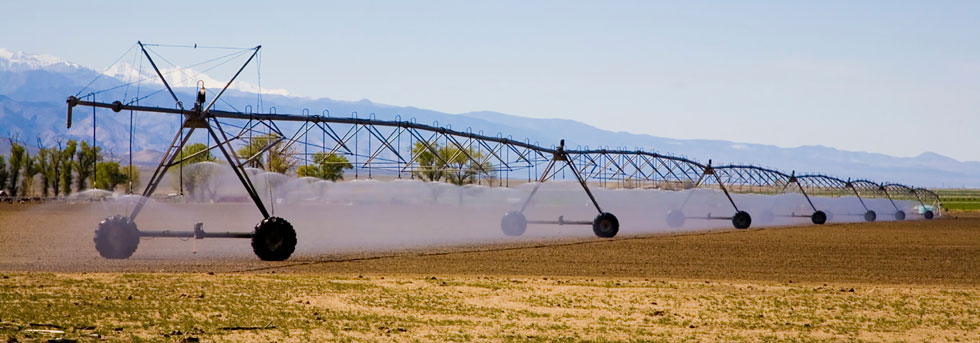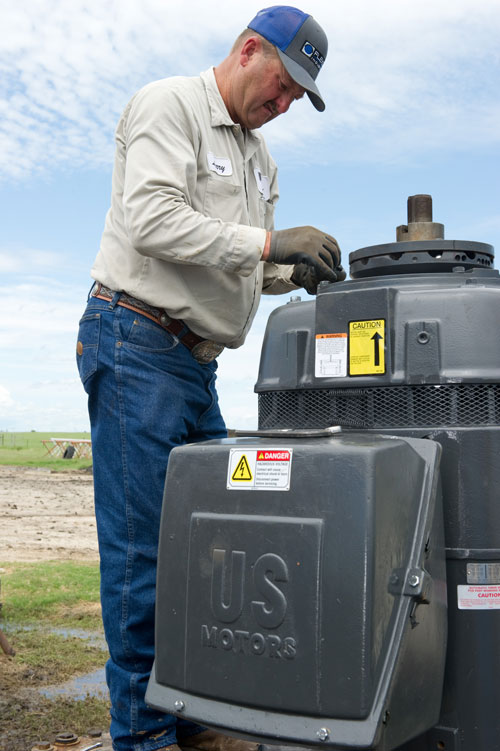
With spring planting season just a few weeks away, now is a great time for those in the agricultural industry to prepare their irrigation and pump motors. After sitting out in cold and damp weather over the winter months, motors must be checked to ensure they are ready to go. Taking care of any issues now will allow more time to tend to the most important tasks: getting seeds in the ground and giving crops the water it needs for a good start.

Here are seven helpful tips to ensure equipment is ready to go this spring.
1 - Clean ventilation screens.
Make sure that ventilation screens are clear of debris, bugs or anything else that could interfere with the motor’s operation. Sometimes critters try to get into the motor because it is warmer and drier and protects them from the elements. Be sure to check and clean both the top and bottom screens.
2 - Check the oil level.
Just like for a car, make sure that the oil level is sufficient. An oil site window is found on some motors and is a helpful way to check the level. A cloudy or milky appearance may indicate water or moisture infiltration from a condensing environment. Have an oil sample analyzed if needed. Oil should be changed yearly.
3 - Get the motor and pump checked at the same time.
Call a well driller, installation contractor or colleague who maintains the equipment to schedule a preventative maintenance visit. Make sure they check the entire system, not just the motor. They should lubricate the parts and identify other maintenance that is required so that the equipment will perform well throughout the season.
4 - Ensure the motor is completely dry before running it.
Motors are not completely sealed, so moisture from rain and damp conditions can quickly form inside. It is best to choose motors that have small, embedded space heaters, similar to those in car seats. This allows users to warm up the air inside the motor to make sure it is completely dry before turning on the motor. This is important because operating a motor that has moisture in it could cause damage to motor windings. Motor warranties do not cover user errors, so it is important to maintain the motor properly. It is recommended that farmers keep the heaters powered all year long (when the motor is not in operation) to keep moisture from building up.
Temperature and moisture can also impact the insulation resistance quality of the power system cables, degrading them over time. That is why it is important to perform an electrical megger test of cables and confirm acceptable levels prior to energizing the motor. If a user is hiring a technician for the overall motor check or maintenance, be sure and ask them to test the insulation resistance.
5 - Make sure the motor starts up in good working order.
Check the product service manual for recommendations on how often a motor should be run/how long it can sit without being started. Once it is certain that the motor is completely dry, turn it on to ensure that it powers up and that everything is working the way it should. Before startup, confirm that the motor/pump rotates freely by hand (using a wrench to turn it) and that motors with ratchets will only rotate in one direction.
6 - Get necessary repairs done before the growing season starts.
Now that the equipment has been tested, there may still be some issues. It is easier to get repairs done or replace failing equipment while the fields are still being prepared than having a failure midseason, and then it becomes an emergency. By taking care of things ahead of time, users can save money by avoiding preventable and costly midseason downtime, and users can also take advantage of any preseason sales that motor manufacturers might offer.
7- Do not neglect the maintenance of related parts like the wells.
During the offseason, farmers may want to call their well-drilling contractors out to check the well and verify that if there are screens on the suction of the pump down well, they are not getting clogged. Make sure the walls of the well have not started to collapse and they still have water.
If the well does not have enough water, it is not able to supply the water that the system is capable of putting out or if the water level drops, sometimes it can begin to cavitate. If users get cavitation inside
the pump, that will damage the pump. These are the types of things that users want to check in advance to help avoid problems.
It may sound simple, but preseason preparation for irrigation and pumping motors is a matter of following basic but crucial steps. The motor requires a little bit of attention, like a well-maintained car. Make sure the oil is in good condition, that users have turned the space heaters on to dry out the motor, then give it a bump test to make sure it will spin up and there are no electrical system issues associated with powering the motor.
Follow these steps and be ready when planting season comes around.

